
|
.jpg)
We must know that the only way we can keep healthy is through our Indian Classical Music.
H. H. Adishakti Shri Mataji Nirmaladevi 27-1-1986.
.jpg)
If they listen to this Indian Classical Music they will have no diseases, no heart attacks, nothing...
H. H. Adishakti Shri Mataji Nirmaladevi 27-1-1986.
.jpg)
Indian classical music coupled with Shri Mataji Nirmaladevi's meditation has the power to cure illness and relieve stress
Nirmalanand-Acharya Dr. Sadanand Ganpati Mankar JP.
.jpg)
World peace begins with inner peace
Nirmalanand-Acharya Dr. Sadanand Ganpati Mankar JP.ICMRAA.
|
|
|
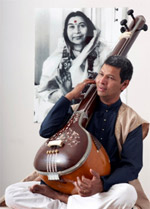
Sangeetacharya Dr. Sadanand G. Mankar JP
(Nirmalanand)
B.Sc. M.C.M. Ph.D.(Music)Vidhya-Vachaspati
Founder Director of ICMRAA.

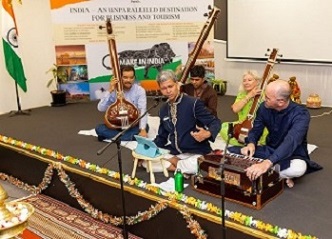


Free Music and Sahaja Yoga Meditation-Audience
Indian Classical Music Research Academy Australia.
The Indian Classical Music Research Acadmey Australia-ICMRAA was founded by Acharya Dr. Sadanand G. Mankar JP.
The ICMRAA was started in 1999 and offically registered on the 15th of June 2006 in Australia. The ICMRAA respects and follow the teachings of Guru H. H. Adishakti Shri Mataji Nirmaladevi. Classes are offered for North Indian Classical (Hindustani) Raga Music from Beginners/Diploma/Master to Ph.D. level and also Chakra Raga meditative music, how to awaken/sooth Raga/chakra deities, how to balance body chakras with Indian Ragas, Dhrupad/ Dhamar(Dager style), Khayal(Jaipur/Agra/Kirana gharana), Bhajan, Body Chakra cleansing/Balancing, Sahaj Music, Yoga Sadhana, Nadopasana, Omkar Sadhana, Sanskrit chanting, Bija Mantras, Intro Music Therapy etc. World peace begins with inner peace.
What is Indian Clasical Music
The origins of Indian classical music can be found in the Vedas, which are the oldest scriptures in the Hindu
tradition. The Samaveda, one of the four Vedas, describes music at length. The Samaveda was derived from the Rigveda so that its hymns could be sung as Samagana; this style evolved into jatis and
eventually into ragas.
Indian classical music is both elaborate and expressive. Like Western classical music, it divides the octave into 12 semitones of which the 7 basic notes are, in ascending tonal order, Sa Re Ga Ma
Pa Dha Ni. Hindustani music, is similar to Western music's Do Re Mi Fa Sol La Ti Do. However, Indian music is dependant on 22 shrutis, which are microtones within that octave. These microtones are
not easily discernable to the Western trained ear which is used to the sound of tempered instruments.
Indian classical music places great emphasis on improvisation.
It is not possible to write precise notation systems for ragas because Hindustani music is in between the notes. It has to be received from the mouth of the guru to understand the application of
each sound.
Indian Classical Raga Music and Meditation ( Raga-chikitsa)
This ancient heavenly music is spiritual. It evolved as an adjunct to meditation because it pleases the deities.
After Self-realisation, H.H. Shri. Mataji Nirmaladevi's Meditation practised in conjunction with this music(Indian Classical Raga) enables a deeper meditation.
The correct application of the particular shrutis (notes) in each raga matches the frequencies of the chakras. This is the basis of Raga chikitsa, the ancient science of healing through music.

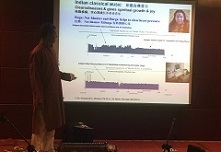
Effect of music and yoga meditation on the human body, autonomic nervous
system-spine, chakras-energy centres and brain TV interview China 2017.
and Free Music & Meditation Maharastra Mandal Perth Ganesh festival 2021/22
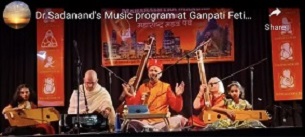

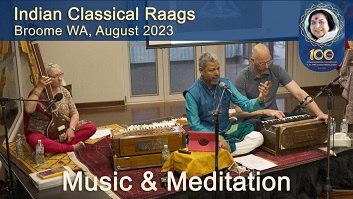
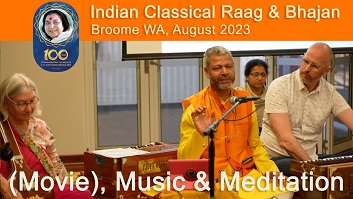
Free Indian Raga Music and Meditation in Broome Saturday and Sunday 5th and 6th Aug 2023 as part of Shri Mataji Nirmala Devi's (founder of the Sahaja Yoga) 100th birth year celebration Dr. Sadanand G. Mankar JP. Sangeetacharya, Ph. D (Indian Classical Music -Vocal, Lorenzo Di Paola (MA Music) -Harmonium, Hazel Hikins -Vocal support and Tanpura.
Australia | Copyright 2014 Acharya Dr. Sadanand Ganpati Mankar JP All Rights Reserved.
For classes(age over 10 years) in Khayal, Dhrupad and Dhamar Hindustani-north Indian classical Raga music contact Dr Sadanand G. Mankar on indianmusic@icmraa.com or 61- 407561662.
"Free Meditation classes by appointment every Friday 7 PM. Indian classical music classes available at any time (paid per hour)"










